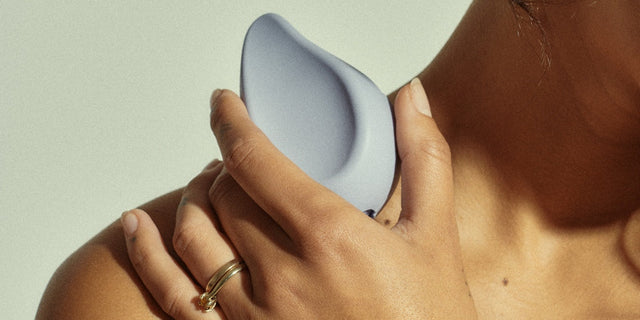Managing endometriosis with a Mirena®: can it actually help?
Real talk: endometriosis sucks. And as a chronic condition that affects around 10% of reproductive-age people globally, millions of people are looking for a little let-up.
If you’ve been lumped with the unfortunate lot of having endo, there is hope. And it comes in the form of an IUD. Conventionally a contraceptive device, doctors are now managing the symptoms of endometriosis with Mirenas® and other hormones, with good results.
In honour of Endometriosis Awareness Month, we’re getting a little more aware. We explore the link between Mirenas® and endometriosis – and how it could help you get your life back.
Back to basics: Mirenas® and endometriosis
Let’s get technical for a minute. Endometriosis is a chronic disease where tissue – like that growing inside the uterus – grows on the outside of the organ. Triggering a chronic inflammatory reaction, endo can lead to scar tissue developing in the pelvis and other body parts. And the toll it takes is different for everybody.
Modibodi customer Sarah was diagnosed with endo two years ago after experiencing periods that got heavier and more painful each month. “I also started getting bad ovulation pain,” she recalls. “It was so bad that it made me brain-foggy, irritable and exhausted, and that wasn’t even during my period.”
This story is familiar among sufferers of endo. The chronic disease can cause a range of symptoms like:
- Painful periods
- Painful urination
- Painful bowel movements
- Pain during or after sex
- Bloating and nausea
- Fertility issues
Enter the Mirena®. Once a beloved contraceptive, it’s now been shown to help alleviate some endo symptoms. But why use an IUD for endometriosis?
Well, this specific IUD releases a synthetic version of progesterone into the body, effectively thinning the lining of the uterus. So as well as stopping sperm from reaching the eggs, it slows the growth of endometrial tissue and eases some of the symptoms – it can be a win-win.
Using a Mirena® for endometriosis
Gynos today are managing the symptoms of endometriosis with a Mirena® insertion thanks to its ability to alleviate symptoms. But what’s involved exactly? Let’s explore.
How is it inserted?
Look, this isn’t as easy as using a cup. Mirenas® require a trip to a healthcare professional to be inserted. Once there, though, it can last for up to five years.
The non-surgical process involves your doctor using an applicator to insert the Mirena® into your uterus through the cervix. And the sensation differs for everyone. Some people say it feels like a pap smear. For others, it’s more painful.
Once it’s been fitted, you might experience some cramping and tenderness. Your doctor should recommend things like a hot water bottle and pain relief to help you find comfort until they subside.
What’s the upside?
Every body is different. And so are the positives you can expect to experience with a Mirena®.
Best case scenario, the discomfort of having it inserted is forgotten once you get to enjoy the good stuff. The biggest positives are reduced pain and blood loss during your period.
Studies show that people report the most significant improvement in the first 12 to 18 months after having their Mirena® fitted. We know less about its efficacy at the five-year mark, though.
“Two years in, and I don’t bleed anymore,” Sarah says. “I still feel my cycle and a bit of discomfort, but nowhere near the all-consuming pain that it used to be.”
For a person with endometriosis, the hope is that you’ll gain a major upgrade to your quality of life.
Are there negative side effects?
Like any other medical treatment, a Mirena® does come with potential downsides. These are some of the adverse risks and side effects you might experience after having it inserted:
- Heavier bleeding
- Irregular bleeding
- Headaches
- Nausea
- Mood changes
- Pelvic pain or cramping
- Weight gain
The good news? Side effects usually only last a few months after insertion. But if things get painful or cause concern, reach out to a healthcare professional immediately.
“It took three to four months before I started to feel things calm down,” Sarah says. “By my fourth cycle, I hardly bled and didn’t have as much pain, even during ovulation.”
Keep in mind that managing endometriosis with a Mirena® is just one option. As with any period care or health treatment, it’s a trial-and-error sort of thing.
Speaking to your doctor is the best way to find a treatment you’re comfortable with.
Endometriosis and leakage: it’s normal
Spotting and leakage. We don’t recall inviting these two to the party, but they’re here anyway. And as an added surprise, they can show up anytime.
After having your Mirena® put in, it’s common to experience prolonged, heavy bleeding or spotting for the first few months. Thanks to endo bleeding between periods, you're probably a pro at this. Still, it’s no fun.
Having a pair of Modibodi’s absorbent undies can help you push the blood (sweat, discharge and pee) burden to the back of your mind. So you can get on with the more fun parts of life.
We’ve got Moderate-Heavy, Light-Moderate, Super Light and Heavy-Overnight options to suit it all. Plus, you can feel as covered or cheeky as you like with styles like the Sensual High Waist Bikini or Classic Full Brief.
Putting an end to endo pain
Endo has earned its rightful place on the long list of stuff we don’t want to deal with, so hormone treatments like a Mirena® might be worth discussing with your doctor.
In the meantime, shop the Modibodi range of absorbent underwear and take back control over all of life’s leaks.










